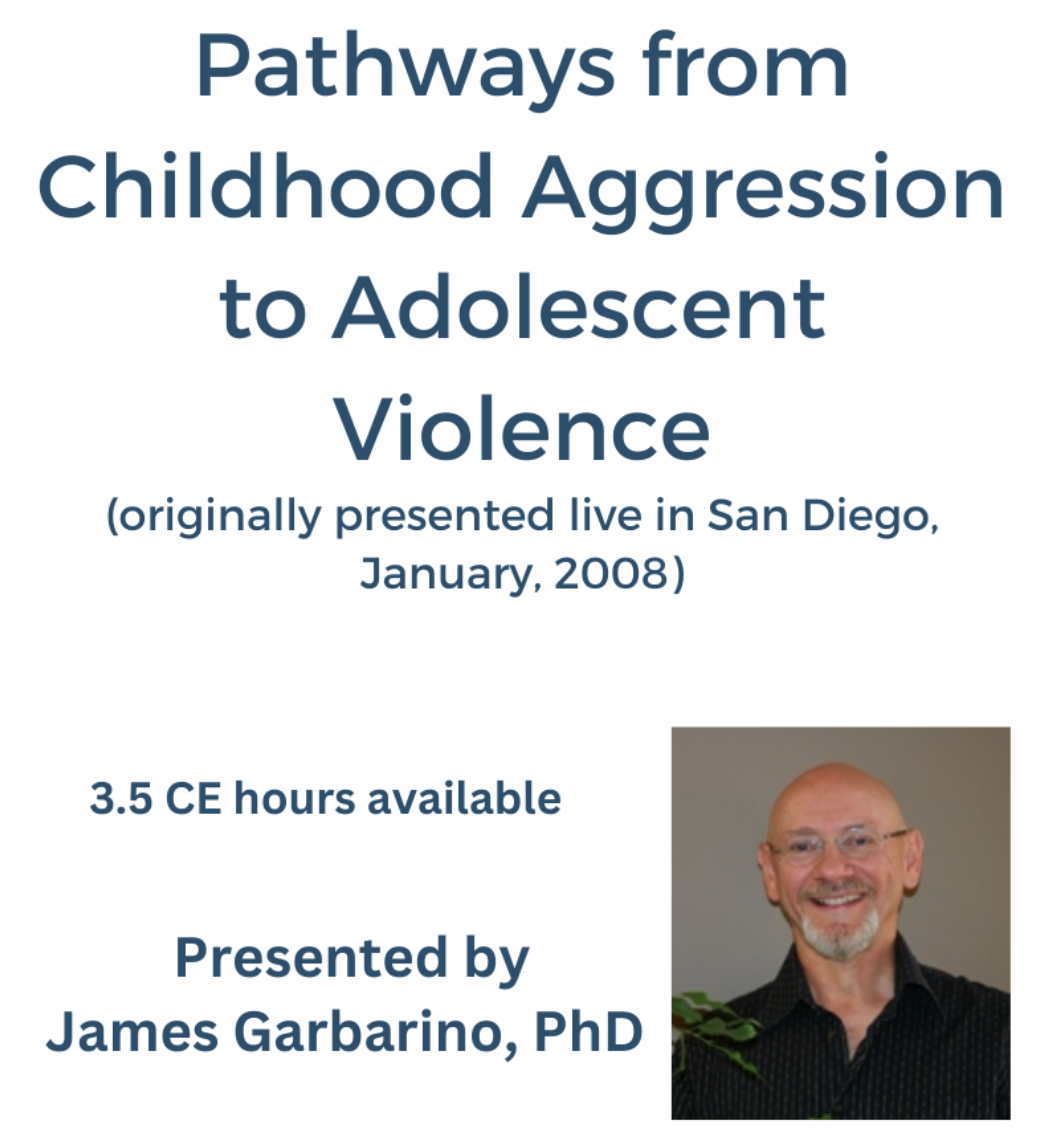Original price was: $129.00.$99.00Current price is: $99.00.
One of the important developmental starting points in understanding violence is that physical aggression is essentially universal in infants (and equally so for males and females).
Early trauma creates risk that this early aggression will coalesce into violent behavior in adolescence.
Brought to you in partnership with ![]()
Description
One of the important developmental starting points in understanding violence is that physical aggression is essentially universal in infants (and equally so for males and females).
Early trauma creates risk that this early aggression will coalesce into violent behavior in adolescence.
The experience of abuse sets the child up for the kind of “risky thinking” that leads to chronic patterns of aggression, bad behavior, acting out and violating the rights of others that can lead to a diagnosis of “conduct disorder.”
If no intervention occurs, this pattern of childhood conduct disorder becomes the entryway into adolescent delinquent and antisocial violent behavior.
The more socially toxic (and traumatic) the environment in which childhood and adolescence occur, the more likely it is that childhood conduct disorder will translate into adolescent violence.
Changing patterns of aggression in girls provide a useful insight into how and why these processes take place.
This 90 minute presentation will analyze these behaviors in girls and boys for their similarities and differences and discuss the implications for violence in adolescence.
Topics include:
- Four elements of “risky thinking” that link early trauma to conduct disorder in childhood
- Three elements of social toxicity that affect the prognosis for childhood conduct disorder
- Two risk factors and two protective factors affecting the impact of early trauma on subsequent aggression and violence





